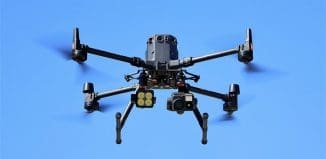Bio-Sensors: Israel’s Guard Dogs
This post is also available in:  עברית (Hebrew)
עברית (Hebrew)

Jack is a fearsome German shepherd from England, where he helps guard a prominent businessman. Jack is currently staying in Israel to receive special training, enhancing his capabilities at the Israeli K9 Training Center.
At this point in our visit the handler P was the target. He wore a defensive vest protecting his entire body, gave Jack the order to attack along with his special code, and soon found Jack’s jaw locked around his arm.
Earlier handler Alon took Sena out of her cage for a morning training session. Sena is a sniffer dog, specializing in explosives and drug detection. Various items were spread around the training hall floor, simulating an airport terminal: Suitcases, bags, a baby carriage, a bicycle and several potted plants. A pistol magazine was hidden inside one of the plant pots, each bullet containing the usual small amount of explosives. When the search command was given Sena quickly examined all the items, found the hidden magazine, looked around some more and finally grabbed the magazine firmly in her jaw.
Dogs have been used for security since ancient times, and they are still relevant even in this age of electric fences, sensors and cameras. Dogs help secure the Israeli stock exchange, New York prisons, LA airport, Israel Railways, Israeli prisons, major security checkpoints and many other strategic facilities.
Amir Shvartz, owner of K9 and an expert in training dogs for law enforcement: “The dog’s special abilities is best utilized as one component in a comprehensive security array, aimed at preventing and suppressing incidents. Dogs’ sense of smell is 100,000 times more developed than that of humans. A dog can differentiate between scents and remember them. Sometimes only a few molecules are enough for a dog to sense something. We understand that types of dog barks, there’s an electronic system which analyzes barks and tells the trainer what the dog discovered.”
Dogs are still relevant, even today. There are biological sensors capable of detecting approaching intruders from up to 250 meters away – much more than any common sensor. Trainers tell that during a security incident in Israel three handlers and dogs scanned 3,200 trucks in four days, without failing once. This process would have taken humans weeks.
IHLS – Israel Homeland Security
Dog pound manager Ofer Efrat Bonjo explained about the different types of dogs:
- Attack dogs
- Sniffer dogs (drugs, explosives, sources of fire)
- Patrol and guard dogs (accompanied by human guards or law enforcement agents)
The common breeds are German, Belgian and Dutch Shepherds, in addition to Labradors. Relevant personnel include dog handlers and trainers.
Intifadas and many terror attacks led to Israeli professional dog handling gaining a lot of operational experience. The Israeli center has branches abroad, supplying dogs for U.S. companies Slingshot, Safeguard and Security Solutions International.
Amir Shvartz: “Our specialty is forming units of dog handlers and preparing them for a variety of missions. Israeli clients include the Israel Railways explosives detection unit, Erez checkpoint, private businessmen, diamond dealers, money changers and anyone else who feels threatened. Abroad our dogs help maintain order and prevent riots. Some dogs are genetically pre-disposed for attack or sniffing, we know how to identify these capabilities and develop them, training a perfect team of dog handlers for HLS, defense and security. We also cooperate with the school of dog handlers and emergencies at Wingate College.”
Recently a prominent Israeli government organization ordered dogs for its security envelope. The clients presented their operational requirements and the center formed a unique security array suited for their needs, including trainers, dogs, training, equipment – all adapted for the extreme environmental conditions required by the clients.
Dogs, much like humans, need to train in order to maintain a high level of ability. An explosives detecting sniffer dog has to training five or six times a day with his trainer. The process isn’t cheap: Sniffer dogs of that type cost around 10,000 dollars, with attack dog costs ranging between 6,000 and 8,000 dollars.
The training facility, located next to Israel’s Gan HaShomron, is protected by some very fearsome attack dogs. “A sensor will detect approaching intruders, but these dogs will detect and also attack and bite. A good working dog locates, alerts and deters.”
Meanwhile Jack continues his training session in the yard. Soon he’ll be back home in England, defending the British businessman who apparently needs him to feel more secure.






























